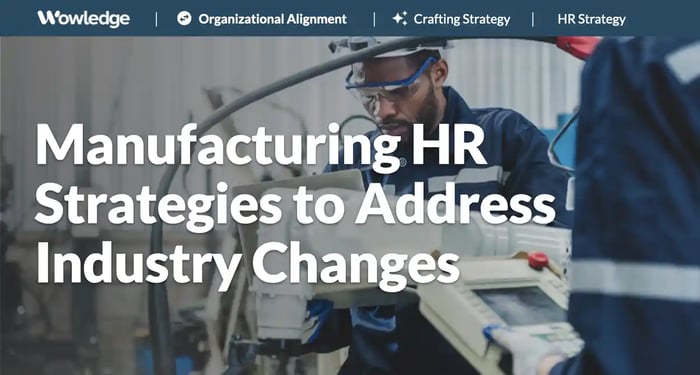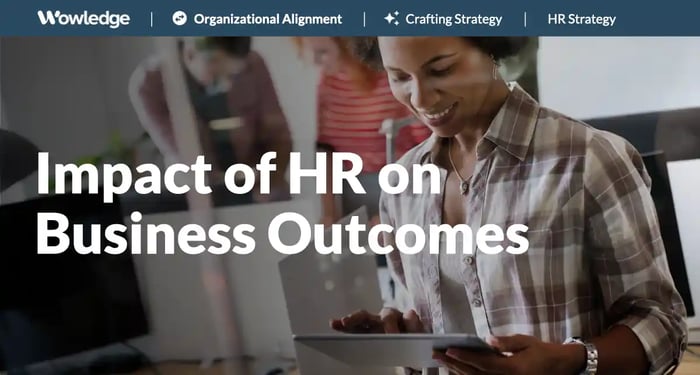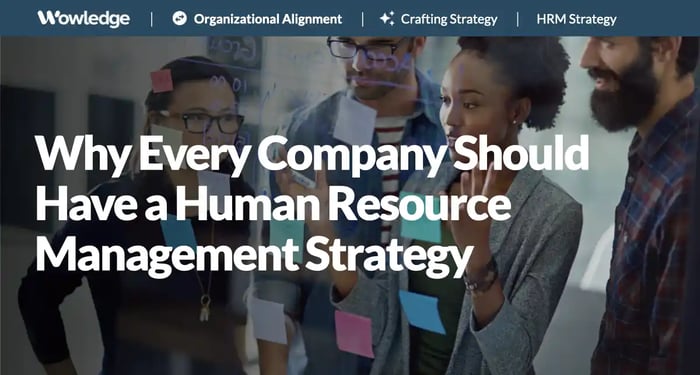Table of Contents
- The manufacturing sector is undergoing tremendous shifts
- Technological and strategy changes transforming manufacturing
- HR issues and related talent challenges
- Understanding the skills challenge in manufacturing
- Manufacturing HR strategies that address its unique challenges
- Relevant Practices & Tools
- About Wowledge
Amongst all employers in the U.S., the manufacturing sector receives more than its share of the press. Politicians have been talking about bringing manufacturing jobs back (“reshoring”) after decades of moving those operations to lower labor-cost countries, and they were joined (loudly) by industry experts during the pandemic when supply chains were disrupted, and consumer costs quickly escalated. Adding to the furor is the increased call for increasing domestic employment opportunities for the shrinking middle class, which contributes to the increasingly large wage gap and to which manufacturing jobs provide access and membership. Developing manufacturing HR strategies that address critical industry issues is essential to the success of all industrial organizations.
The manufacturing sector is undergoing tremendous shifts
The calls for bringing manufacturing jobs back to U.S. soil is more than a socio-political position – it is also based upon some factors driving the need for increased domestic manufacturing capacity. These pressure companies to adopt more robust manufacturing HR strategies in response.
Increased demand is being driven by the passing of new laws and funding that bring nationally based manufacturing back for strategically critical industries to avoid shortages and (potential or real) global supply chain disruptions due primarily to global health (e.g., pandemic) and geopolitics (e.g., Taiwanese computer chips). Three major bills were signed into law in 2021 – 2022, creating significant funding and tax incentives for semiconductors, clean energy, and large infrastructure construction projects. Deloitte reports that over 125 new manufacturing facilities have been announced, with over $300B invested in those designed to produce the parts and raw materials necessary for domestic production. New jobs are and will be created to staff those operations. An additional $2.2 trillion in direct foreign investment increases the demand for manufacturing capacity stateside, and associated manufacturing HR Strategies.
The emergence of the “smart factory,” which brings significantly enhanced digital capabilities into the traditional manufacturing facility, is projected to generate 12% improvements in labor productivity. The changes that come with “Industry 4.0” (see below) power this highly advanced and new(er) breed of highly integrated manufacturing operations with technological oversight, insights, and associated productivity and quality gains. 86% of industry executives view the adoption of this as significantly impacting operations in the coming five-year period.
Supply chain risks continue to pressure U.S. firms to develop more reliable and consistent hedges against various forces that loom as potential barriers to a smooth flow of raw materials, components, and assembled goods needed to sustain market requirements. Issues that stymie manufacturing, shipping, and distribution flows generated by global health crises, weather disasters, pirating, geopolitical crises and instabilities, labor shortages and strikes, and shipping and warehousing issues create the need for alternative plans and resources.
Managing cybersecurity threats is a newer and perhaps more challenging issue for manufacturers. The industry has been the most targeted sector for ransomware attacks for two consecutive years. The associated risk of proprietary and other sensitive data loss is a significant challenge, as is the potential for disrupting supply chains and workflows via cyberattacks. With a projected increase in digitization of production processes and work process tracking, the issue will grow in significance and scale.
Continuing global competitive challenges are driving the industry towards increasing automation and efficiency. With significantly lower labor costs in many less developed countries and (domestic) competitive and regulatory pressures to increase wage levels, U.S. firms must work hard to do “more with less” while ensuring a sufficient supply of capable workers. The advantages that non-U.S. competitors (e.g., in Asia, central and eastern Europe) have with regional suppliers who can ship parts, components, and assembled goods shorter distances also represent a competitive burden that U.S. companies must continue to find solutions for.
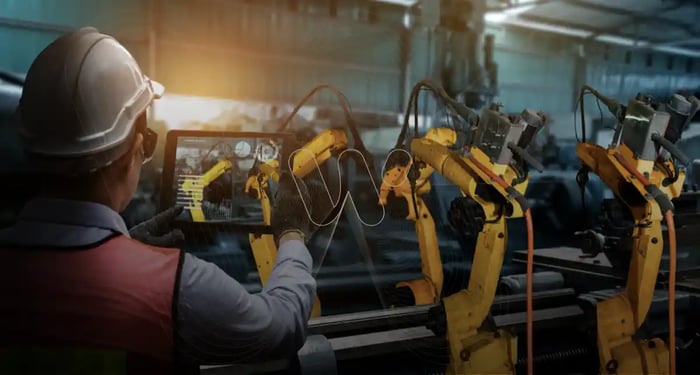
Technological and strategy changes transforming manufacturing
The emergence of many new advances is being promoted and heralded as game-changers for industrialized organizations, and the early signs seem to support that position. However, as with AI and machine learning, the evidence suggests the revolution is merely underway as opposed to dominating. The National Manufacturing Association, for example, while pointing to an industry commitment to adopting the smart factory to improve efficiencies and help manage talent shortages, reports that 69% of companies are making investments in those technologies. Furthermore, 58% rated their maturity in digitally enabled processes and insights between 3-5 of 10. This indicates that integrating automation, robotization, advanced analytics, and Internet of Things (IoT) sensors is still in its early stages.
Only 7% of companies report extensive digitization, but another 15% expect to have theirs entirely digitized by the end of 2026. Those are likely the most prominent manufacturers and the smaller ones (fewer than 500 employees) are more likely to take longer to afford and adopt such changes. Nonetheless, some advances are consistently being called out as advances that manufacturers are adopting or considering adopting in the future. These are also driving the need to adopt more advanced and responsive manufacturing HR strategies. IBM provides excellent insights into these emerging technologies that include (along with talent implications):
Industry 4.0
This refers to integrating advanced technologies into the planning and operating a company’s manufacturing operations. It blends the organization's manufacturing processes into the Internet of Things (IoT), artificial intelligence (AI), and cloud computing. This increases the need for digitally savvy workers and change management strategies at all levels.
Robotics and automation
Robotic process automation (RPA), widespread in auto manufacturing and warehousing, significantly increases productivity by handling dangerous or physically demanding tasks more accurately and easing scheduling issues by offering the ability to operate production lines continually. Workers who need to be able to oversee and work with automated co-workers (“cobots”) require upskilling, workforce planning, and careful change management to ease the transition for current line workers and managers.
3D printing
This offers the ability to significantly improve product design, prototyping, and manufacturing faster and at a lower cost. It allows for custom or out-of-production parts on demand, lowering the space needed for storage and warehousing and improving supply chain efficiency. The impact on staffing models in both production and distribution can be significant.
Advanced materials
Manufacturers increasingly turn to materials with increased strength, durability, and better thermal properties. The growing need for mechanical and material engineers and technicians who design, test, and oversee production adds a new layer of recruitment and training challenges for smaller employers.
Digital twins
These are virtual (digital) representations of physical objects or systems with internet-connected sensors that can simulate the performance of production lines, equipment, and user actions. They are used to safely and quickly set up and test new capabilities, long-term wear-and-tear, and user errors. The need for engineering and computing expertise can be a difficult skill set for many smaller manufacturers to employ.
Sustainable manufacturing
The movement towards lowering the impacts of climate change by minimizing energy and water usage. Manufacturers account for 33.5% of U.S. energy use. The need for employees with expertise in environmental science, company carbon footprint analysis, carbon credit management, and machine and process optimization.
"Servitization"
This represents a strategic change for manufacturers adding services to their product model. These include post-sales activities for a cost, including maintenance, repair, and upgrades to their customers. These new lines of business require hiring a new class of workers – such as customer support, service teams, and software (monitoring and upgrade) engineers – and adding expertise in contract management, outsourcing, warranties, and customer experience (CX).
HR issues and related talent challenges
Given the industry's range and speed of changes, HR and business leaders face many associated people-related challenges. The issues profoundly impact operations, requiring a true partnership between those responsible for HR and the organization’s leaders and line management. The critical path towards successfully creating manufacturing HR strategies to manage these requires an understanding of the degree to which each of these is impacting the organization’s ability to meet demand (e.g., HR’s knowledge of the business and its drivers) and the ability to build agile and timely programming (policies, processes, practices) that overcome or minimize their negative influence on business outcomes.
Talent shortages
Despite census data suggesting a 35% decrease from peak U.S. manufacturing employment since 1979 and the current level of 12.9M workers, new legislation, investments, and business prospects are significantly increasing the demand for U.S.-based capacity. The BLS estimates that 970,100 new hires will be needed in production jobs alone annually through 2033. The National Association of Manufacturers estimates that as many as 3.8 million new jobs will be created in the next ten years. Deloitte reported that there are currently 506,000 manufacturing job openings. With continuing low unemployment, 75% of manufacturers struggle with employee retention and recruitment, pointing to the need for improved manufacturing HR strategies.
The facts behind this shortage are well-documented, including the aging of the manufacturing workforce, decreasing interest in trades and manual labor, increasing demand for higher-skilled workers with perceived options in “better” industries, and less flexibility in schedule and work location offered by production-based employers. Adding to the issue are continuing shortfalls in STEM graduation rates. Developing solid manufacturing HR strategies for recruitment and retention are critical to operational success.
Low engagement
Gallup reports that manufacturing organizations have among the lowest measured levels of engagement across industries. The industry has a 25% employment engagement level, 8% less than the national average. The impact of such data on talent attraction and retention efforts is substantial and may be driven by company size, culture, and resource availability. The need to address these as part of one's manufacturing HR strategies cannot be overstated.
Most manufacturers are small
The National Association of Manufacturers reports that most (98.3%) industrial companies are small operations with less than 500 employees (93.4% have less than 100 employees). Fewer employees generally means fewer resources that can be applied to managing and improving the employee experience (EX) and supporting their managers.
Union and employee resistance
Employees and unions resist adopting new technologies due to a fear of replacement by automated “workers,” such as robots. This reality exists and requires management to keep those line workers and managers engaged while taking advantage of productivity improvement opportunities to sustain the company’s competitiveness. Nonetheless, the risk of strikes, work slowdowns, and other operational disruptions creates tremendous pressures for industrial employers.
Changing labor force demand
The types of employees that manufacturers are used to recruiting, managing, and retaining are changing significantly with the introduction of new technologies and manufacturing management techniques. McKinsey projects that the demand for traditional physical, hands-on skills will decline by 30% over the next decade while requirements for technical and digital skills will increase by 50%. The issue of finding a sufficient supply of skilled laborers (machinists, welders, metalworkers, production planners) will continue as critical skills are coming out of vocational schools and apprenticeships at historically low levels.
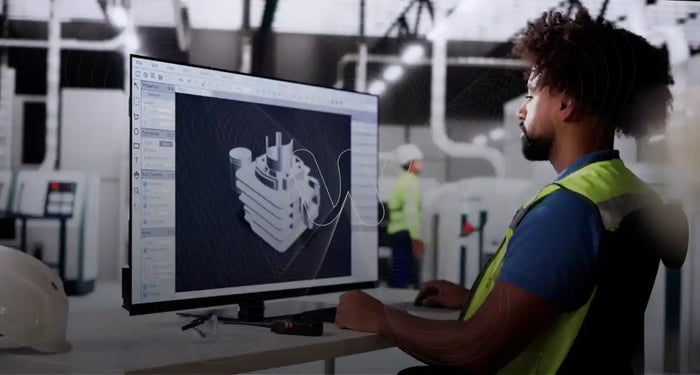
Understanding the skills challenge in manufacturing
The advent and rise of technology and process advances are creating a new world for many seasoned manufacturing HR professionals. As these upgrades are planned and adopted, HR leaders should become educated about the new skill requirements associated with them. While many might sound like space-age concepts to some, those in the advanced manufacturing segments (aerospace, automotive, medical and pharmaceutical, electronics) are likely familiar with some, if not all, of these. Developing manufacturing HR strategies that address talent acquisition and development will be a key driver of having a sufficient pool of skilled people available to fulfill critical operational requirements. Those skills will be required for professional-level workers and the technicians, production line workers, and supervisors who will increasingly be called upon to exercise judgment and quality control while monitoring automated machine processes.
Digital integration: Related to installing Industry 4.0 concepts, this contributes to the demand for skills found in programmers, cloud computing engineers, AI, and Internet of Things (IoT) experts. Skills include:
- Digital tools, enterprise platforms (ERP, supply chain, CRM, production and warehousing), data analysis, IoT sensors, and cybersecurity. Expertise will be required in systems integration, and database, warehouse, and data lake management.
Robotics engineering: Involves the design, development, programming, and management of robotic devices. This requires computer science, mechanical and industrial engineering, and electrical and computer engineering skills.
- Artificial intelligence and machine learning (for training machines and robots), control systems and mechanisms (to program machines for safe and efficient operations), CAD, CAM, and CNC design and operational expertise (for robot design and operations), and various programming languages to link hardware, software, electronics, and simulation software for testing.
Engineering capabilities: Expertise in mechanical, materials, electrical, and systems engineering related to the fabrication of raw materials and components, combining components, and finished products.
- CAD, CAM, CNC programming and operations (for designing and producing prototypes and components), 3-D printing (creating components and finished products), stamping, welding, cutting, and machining techniques (for programming machines to meet production specifications and standards).
Data analytics: The digitization of workflow planning, design, and execution generates terabytes of data from machine-based sensors and manufacturing, financial, and supply chain systems. Understanding trends and interpreting data requires skills typically found in process analysts and engineers, data scientists, statisticians, even physicists, and other “hard science” professionals. Other roles will need to leverage the data and reports generated by experts.
- Data definition (dictionary development), cleansing, analysis, statistics, database and data lake management, programming, AI and machine learning, visualization, critical thinking, presentation, interpretation, and communication.
Services Capabilities: The rise of value-added services that augment the production of tangible goods creates new space for traditional manufacturers to hire people with expertise in consulting, customer support, training, contract management, procurement, leasing, and software management. Skills will be required from exempt and non-exempt employees in many new roles.
- Customer interface (call handling, problem resolution), design thinking (customer-focused service and process improvement), communications, contract and warranty management, parts replacement, leasing and sales, training design, consulting, data analysis, remote monitoring and diagnostics, predictive maintenance, and software updates and fixes.
Working with robots: The ability to work (and coexist) with “cobots”, or collaborative robots, represents a new skill set for many, requiring a mindset and skill shift. The idea that the cobot can do the load-pulling in a warehouse or the welding or assembly can intimidate a worker who used to perform those tasks but can be overcome when that worker becomes a quality assurance, machine-watching, human judgment exercising colleague.
- Real-time digital report observation and interpretation, machine operations performance monitoring, quality standards assessment, production process design and improvement.
Adopting these new technologies, roles, and work methods will also increase the need for teamwork, critical thinking, systems and integrative thinking, project management, emotional intelligence, and continuous learning. These will increase in importance as workers operate across functions and processes in product or service-based teams, develop skills that lead to new roles and responsibilities, and generally advance into a project, people, and process management position.
Manufacturing HR strategies that address its unique challenges
1. Support, invest in, and recruit from schools
This should be conducted with integrated engineering programs that blend multiple engineering disciplines with other project skills in project management and digital tools. Create long-term relationships with local or regional two- and four-year colleges and universities that produce graduates more likely to stay closer to home for a well-paying job. Seek candidates with credentials or course completions at colleges, technical or vocational, and even high schools and online learning platforms like Coursera and Udemy, which offer Industry 4.0 study programs.
2. Recruit from non-traditional sources and consider apprenticeships
It would enable access workers with some of the needed capabilities who can be put to work while gaining development in the fuller range of applications, tools, and systems needed for higher-level work. Conduct workforce availability research using the Census Bureau’s Job-to-Job (J2J) Flows Explorer that highlights the number of workers changing jobs to go into manufacturing by state and metro area, previous industry, and a range of demographics to expand the candidate pool for sourcing purposes.
3. Develop a continuous learning process
An approach that engages workers at all levels – from the manufacturing floor to technical support (production planning, quality assurance, maintenance, plant operators, EH&S) on the skills needed for near-term adoptions, the next-level role requirements, and potential future roles. Create structured opportunities for career growth through skills and career progression-based learning programs, job rotations, and formal succession and mobility processes down to those on the shop floor. Create internal mobility and apprenticeship programs (like Amazon's) based on validated skills and potential assessments. Provide time away from the job for mentoring, coaching, and online learning, and reward managers for moving team members to other functions, roles, and job levels.
4. Understand how to attract and retain workers motivated by manufacturing opportunities
It demands keeping up with the latest research and data on manufacturing development and retention. For example, employees in the industry who stay cite work enjoyment (83%) and job stability (79%). 69% like their employer’s family-oriented culture, and 68% feel a good work-life balance. Leverage data such as that to build and improve employee experience, process design, and managerial behaviors. Use validated assessments to assess job candidates' fit with the work, culture, and ability to grow based upon those who have succeeded and stayed.
5. Focus on building more meaning in the work
Bringing meaning to work has been established as a key driver of employee engagement, productivity, and retention. Explain to employees regularly how their individual and team’s work is connected to the business's and its customers' mission and objectives. Communicate business progress and publicly highlight the efforts and outcomes of individuals and teams that have led to successes for the company and its customers.
6. Engage employees in the business
This can be accomplished by leveraging operational management approaches such as employee involvement, self-managed teams, and continuous improvement project teams. The Manufacturing Institute cites this as among the most sophisticated retention efforts. Giving employees a say in how their work efforts and processes can be improved while giving them a sense of autonomy and control over their work drives engagement, productivity, and retention.
As new technologies and work processes are adopted, engaging workers (and unions if in place) in communicating, planning, upskilling, and making new role decisions are shown to help increase acceptance and adoption of the changes.
7. Consider flexible work scheduling options
These strategies work as a differentiator for attraction and retention. A recent survey found that 46.8% of manufacturing executives reported that their company offers flexible scheduling to production workers. Forms of flexibility offered to production workers can include remote work, compressed workweeks, swapping or split shift opportunities, and job sharing. Given the popularity of flexibility, this should be considered as a timely approach to include among other manufacturing HR strategies.
Relevant Practices & Tools
Advanced Workforce Planning Practices that Provide Dynamic and Targeted Supply and Demand Insights. >
Advanced workforce planning practices help evaluate and make projections of employee supply and demand at a role level, creating a more refined view of talent needs and availability.... more »
Establishing a Core Talent Management Strategy to Set Priorities and a Strategic Roadmap. >
As a company defines its business strategy, each function must align its objectives and actions to support its strategic goals. Talent management strategy is a key process... more »
Identifying and Nurturing Effective Internal and External Talent Sources. >
The effectiveness and efficiency of the recruiting process will greatly depend on the organization’s ability to identify multiple sources of qualified candidates and nurture those channels... more »
Leveraging Advanced Training Approaches that Actively Engage the Populations Impacted by Change. >
For initiatives that have a high impact and/or impact a large number of stakeholders, it can be beneficial to diversify training delivery mechanisms to include eLearning and consider... more »
The Strategic Headcount Demand Tool: Capture, Calculate, and Communicate Projected New Hires and Required Replacements. >
A tool that guides the identification and quantification of the impacts of key long-term business strategies and projected turnover on the future employee population... more »
About Wowledge
Wowledge is the expert-driven platform for lean teams building strategic HR programs. Members enjoy access to up-to-date best practices, step-by-step guides, tools, templates, and insights to accelerate the design and implementation of all key HR programs and processes.
Since each organization has unique characteristics, needs, and aspirations, Wowledge's practices are developed utilizing an exclusive stage-based approach – from Core to Advanced to Emerging – that reflects distinct levels of sophistication to meet our members where they are.
Build strategic HR programs with refreshingly easy-to-follow best practices.
Get started for FREE! Learn more.
